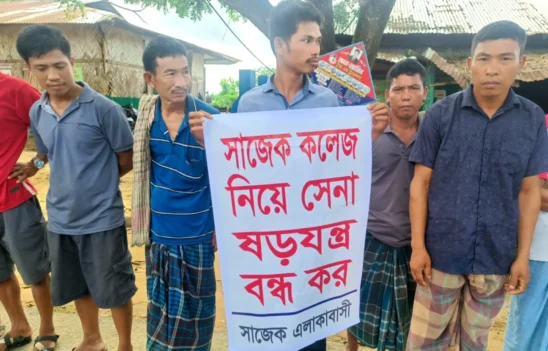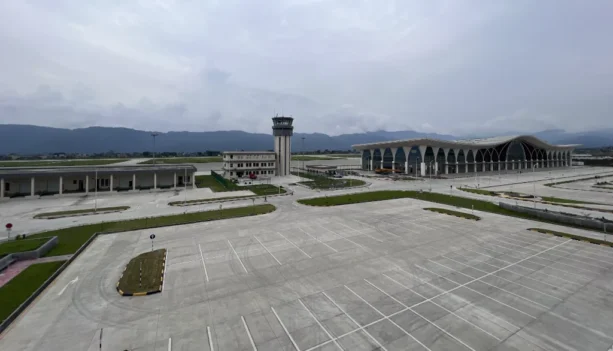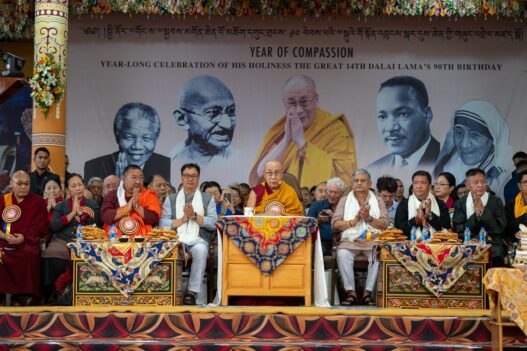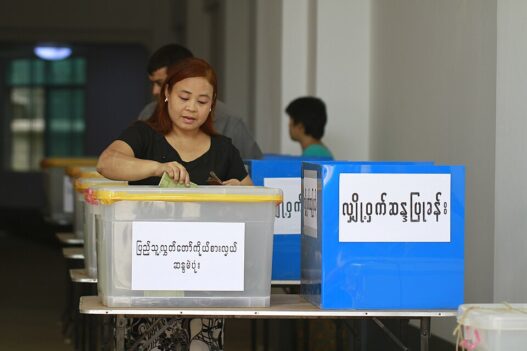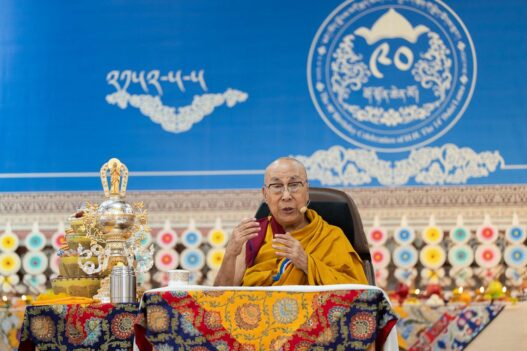Dan Village Nagaland
Borders are not always meant to be barriers or create the feeling of “us’’ and “them” between communities living on either side of the divide. It can be more humane and without the man made barriers in many ways. Take Dan village for example, this tiny hamlet which separates India and Myanmar up the hills of eastern Nagaland’s Noklak district takes pride in the fact it is able to cater to the needs of people- mostly the Khiumniangan Naga tribes from both sides of the border.
Surrounded by the majestic Saramati mountain of Nagaland on its west, this tiny sleepy hamlet which is adjoining another similar dwelling called Pangsha which literally lies far away from the maddening crowd, has its own unique stories of how it houses students from both sides of the border under the same roof of a school and also jointly engages in agriculture practices and organising traditional festivals. Such bonding and bonhomie have its own significance especially given the fact that this of one many sensitive international borders which India shares with Myanmar which has been prone to insurgency and armed conflicts in the recent past. In fact, an Assam Rifles outpost which is prominently located in the village stands testimony to many encounters and insurgency related incidents. The Burmese side of the border is known to have safe havens of different North East militant groups.
Besides this, the Dan village had seen an uprising from locals when the Myanmar government made an abortive bid in 2016 to fence about three kilometers of the imaginary border that passes through these villages.

However, these challenges have not dampened the spirits of the local Naga tribes who inhabit the village. Their determination is reflected in their hard work and steadfast approach towards life, especially when it comes to educating their children and giving them a better educated life. For many of the young girls and boys’ life has completely changed after entering the Mission Straightway School which is situated along the international border at the International Trade Centre (ITC).

Hang Ching who is a local from the village had once said that children who attend the school “not only learn about different subjects, but find new friends from the different villages and from across the border, which is extremely important for their growth and for the community.” Students from villages in Myanmar also come to get formal education at the school.
The resilience with which the people of Dan have managed to overcome the challenges and stand up as a community and as proud citizens of the country is perhaps best described by the bonds of community and culture that run deeper than the porous border that surrounds it.

Dan has a rich culture and history of its own. The village has a population of 636 people, with 371 male and 265 female, as per the 2011 census. Despite its isolated location, the village is home to a diverse community with over 122 houses and is located 35 km from the sub-district headquarter of Noklak and 91 km from the district headquarter of Tuensang which serves as the nearest town for major economic activities.
The Mission Straightway School
In a place where the spirit of determination runs strong, Dr. Aotemtshi Longkumer, driven by his humble beginnings, founded ‘The Mission Straightway School’ in the Dan village in 2010. Aotemshi’s inspiration is his mother who single-handedly fought against all odds to raise her five children. This was the trigger to dedicate his life to education, as he went on to become the first Naga to hold a PhD in mathematics and later became a professor at Fazl Ali College in Mokokchung.
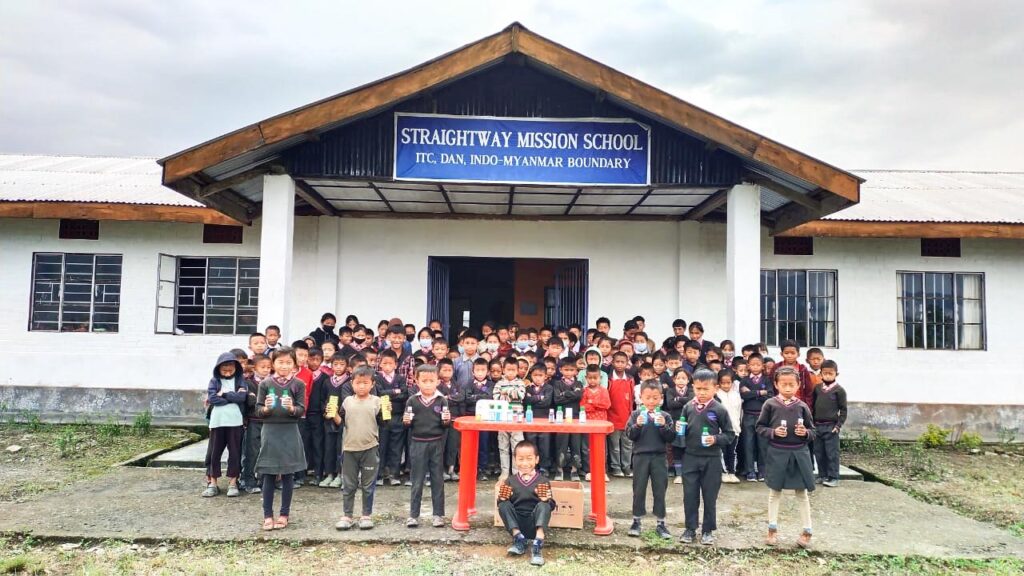
The stormy journey and the undying passion for education led him to establish six education centres under the parent body, the Straightway Christian Mission Centre.
Today, the Mission Straightway School at the ITC stands as a testament to his dedication, providing students with the means to thrive with resources and the support they need.
For Aotemshi childhood was like most children in the village where a good formal education was a luxury. These disadvantages which he experienced at an early age gave Aotemshi sufficient reason to make a difference. He started his village education venture with a project in Dan on March 18 2010, beginning with two pre-primary and first standard classes.
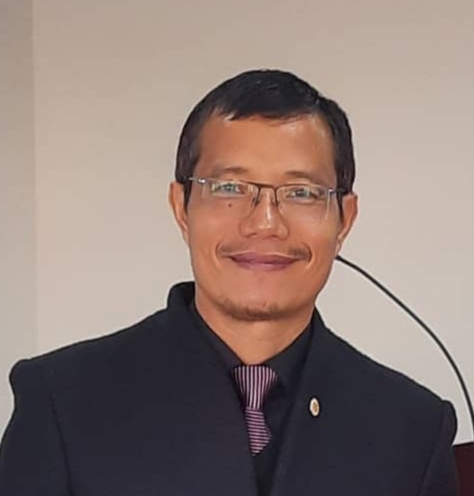
At the time, the village had no proper roads, electricity or mobile internet network making it difficult for him to run the school. However, where intentions are pure and steadfast, there are no obstacles big enough to stop the march which Aotemshi proved soon enough. The belief in himself to be able to start formal school in one of the remotest parts of the country attracted as many as 61 students in the very first year of the school. Overcoming the challenges mostly owing to poor infrastructure and lack of resources, the level of education was scaled up to the 8th standard soon and in the process made a big difference in the lives of 305 students.
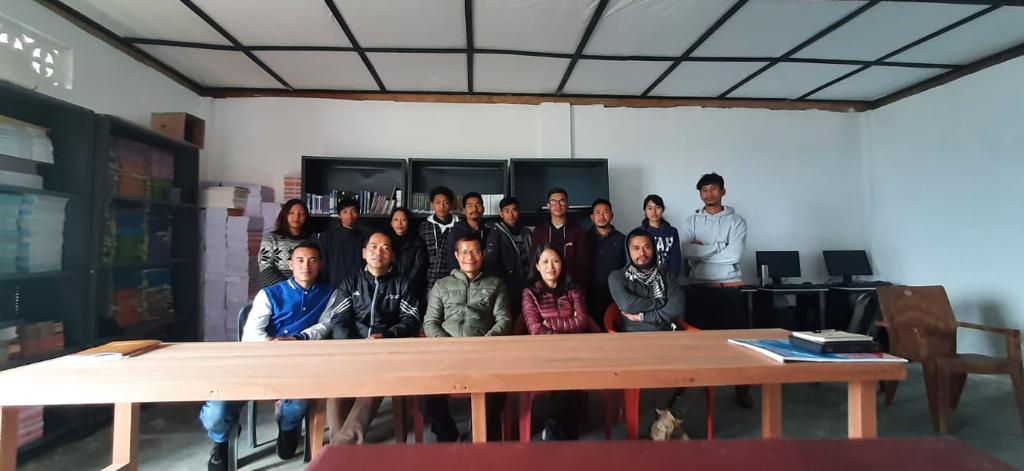
This year the school is gearing up to begin the 9th and 10th standards which will cater to the needs of the students most of whom are not able to afford going to schools in the district headquarters in Noklak or other nearby cities and towns. The school also has a sizable library built book-by-book from various donations and today stands out as a great example of how education can cut across various barriers and physical borders, something exemplified by its motto ‘Awake & Shine.’
Bridging Borders Through Education
The composition of the students in the school as is mentioned earlier, from both sides of the international border makes the place even more exciting with deep life lessons for many of us who come with preconceived notions about boundaries and borders.
The continuing conflict and political situation in Myanmar have left students from many bordering villages and towns across Myanmar to cross over to Dan to continue their education. Although, an overwhelming 60% of students are from Noklak, around 40% are Myanmarese Nationals from seven Burmese villages like Kingphen, and Hinaphu, to name a few. Most of the students are from Lahe, Leshi and Nanyun town in the Naga Hills of the Sagaing Division on the Northwest frontier of Myanmar are situated in the Naga-Administered Zone of Myanmar’s military drafted Constitution of 2008.
Many schools on the Burmese side of the border are not functional or run by a single teacher. Apart from the frequent violence, the Khimanuingan Nagas of the above-mentioned villages also face increasing apathy from the Burmese state towards their basic needs.
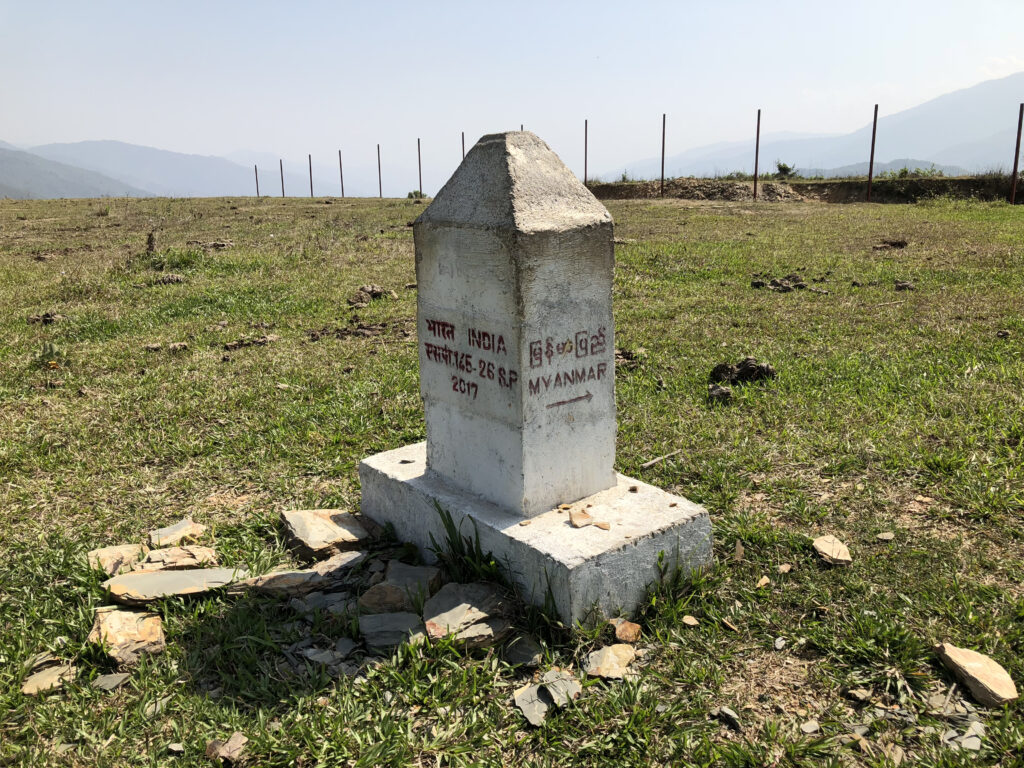
In December 2021 the proprietor of Mission Straightway received a desperate call from the pastor and village leaders of Kingphu, a small borderland village near Dan. The pastor shared “the problem of their children being unschooled for nearly three years,” recalls the management of the school. “All they do is roam in the forests and play with wooden wheels!” the pastor exclaimed.
They pleaded with the Centre to send some teachers to teach their children basic spoken English and education which prompted the village folk of Dan to collect wood, bamboo, and human resources to construct a learning centre in Kingphu. On April 10, 2022, a learning centre-modelled in the form of a school was inaugurated, with 64 eager students.
At the learning center, the children are separated into three different age groups, ranging from 3 to 13 years old, and taught by a dedicated teacher. To ensure that the education received is comprehensive, teachers from the Mission Straightway School in Dan come to the learning centre every Saturday to reinforce and strengthen their teaching.
Staying Together to Learn Together
Have you ever heard of children of 12, 13 or 14 living alone in a house so that they can attend school? In the village of Dan, around 70 students out of the 305 have their own tiny house where they cook, clean and study, while their parents who live far away because of work, occasionally visit to check on them to give their blessings. Such is the grit and passion of the people too in a land unknown to most. They want their children to be educated and join the “mainstream,” where various career options are available.
The Dan school is situated a mere 10 meters from the border post. Fascinatingly, their playground lies half in India and half in Myanmar. Imnaakum Ao, a local resident mathematics teacher at the Mission Straightway school joked that “the goalkeeper of one team always defends the Burmese goalpost.”
Although the school today stands on the soil of the border with great pride, the journey was not easy. In addition to staff shortages and lack of funds, there are several problems peculiar to the place where the location of the school presents its own unique set of challenges related to ongoing conflicts. At a time when there were no border posts of the Assam Rifles or the police, the school saw its first insurgency related firing incident in 2013.
This caused fear among the children and the staff as they were uncertain whether they would ever return to school. Teachers like Imnaakum took charge and personally went out to meet the parents to convince them that the students were not the targets. “It took great patience and perseverance in bringing the children back to the classroom,” the teacher recalled. The school has since then witnessed many such violent incidents, never affecting student attendance.

Overcoming Struggles One Step At a Time
The community of Dan is faced with many challenges when it comes to education and health care. The insurgency driven conflict was clearly a major concern, however, the health infrastructure of Dan where the village’s only dispensary without any attending doctor leaves the entire village without access to proper medical care.
The summer months bring a surge of viral fever cases, causing widespread absenteeism and school dropouts. And if that was not bad enough, the school faced its biggest obstacle yet in 2020 with the arrival of COVID-19.
The COVID-19 pandemic added yet another layer of complexity to these challenges. The global shift to online education left Dan stranded as the online mode of teaching was not possible due to poor internet connectivity. “Even uploading a document online in itself is a painstaking task here often involving a one hour trip to Noklak town,” said Imnaakum.
In fact the first few conversations between the writer and Imnaakum was about connectivity. “Sir, let me come near the kitchen wall; I get the phone network only there”, he said as we began to discuss about the school and how it has evolved over time.
The transition to teaching through online mode seemed beyond their imagination. However, the school was able to adapt by implementing smaller batches of students, social distancing, and use of hand sanitisers to help them sail through.
It is an accepted truth that a calm sea seldom makes a skillful sailor. The unfettered courage shown in the face of all the difficulties is a testament to the power of education and has positively impacted society. This education revolution is a sign of hope for many. The case of Dan stands out as one of the best examples of such hope.
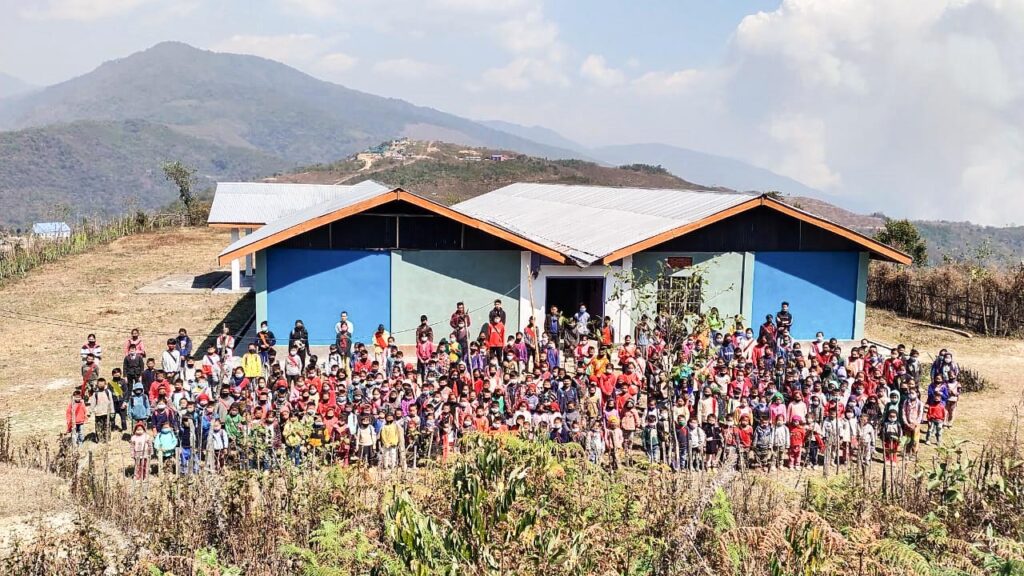
The age-old adage, “The journey of a thousand miles begins with one step” is timeless. It especially holds in the case of the dusty village of Dan where the voyage is truly a thousand miles. The initial step taken by Dr. Aotemshi’s unwavering dedication to the school, which connected the hamlet to a group of people who refused to let circumstances stand in the way of their pursuit of knowledge.
With inputs from Bidhayak Das

